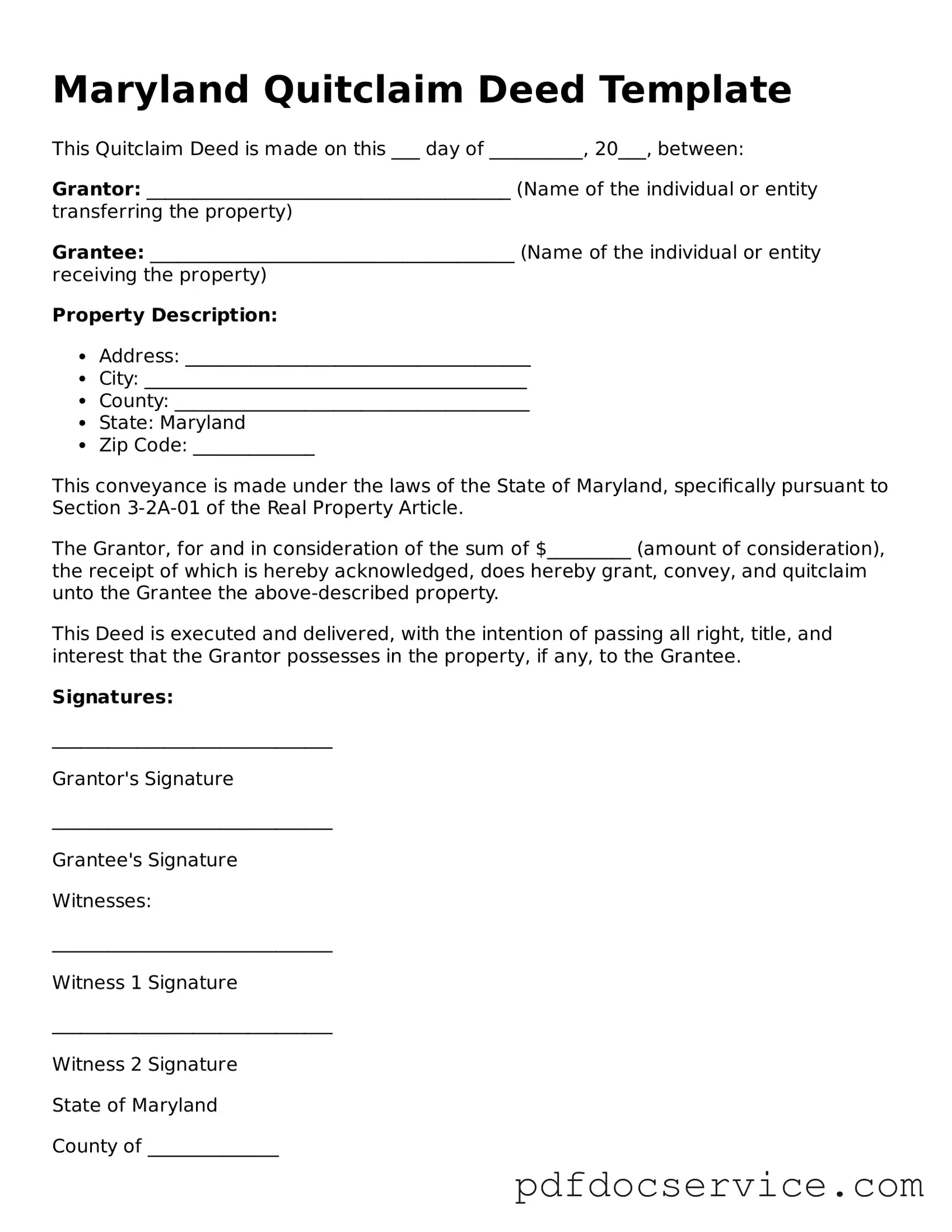What is a Quitclaim Deed in Maryland?
A Quitclaim Deed is a legal document used to transfer ownership of real estate from one person to another. In Maryland, it allows the grantor to convey any interest they may have in a property without making any guarantees about the title. This means that if there are any issues with the property title, the grantee accepts the property "as is."
When should I use a Quitclaim Deed?
Quitclaim Deeds are commonly used in situations such as:
-
Transferring property between family members.
-
Divorces, where one spouse transfers their interest to the other.
-
Clearing up title issues or claims.
-
Adding or removing a co-owner from the property title.
How do I complete a Quitclaim Deed in Maryland?
To complete a Quitclaim Deed, follow these steps:
-
Obtain the correct form. You can find it online or at local legal offices.
-
Fill in the grantor and grantee's names and addresses.
-
Describe the property being transferred, including its address and legal description.
-
Sign the deed in front of a notary public.
Do I need to notarize a Quitclaim Deed?
Yes, a Quitclaim Deed must be notarized in Maryland. The grantor must sign the document in the presence of a notary public, who will then affix their seal. This step is crucial for the deed to be legally valid.
Is there a fee for filing a Quitclaim Deed in Maryland?
Yes, there is a fee to record a Quitclaim Deed in Maryland. The amount varies by county. Check with your local land records office for specific fees and payment methods.
How do I record a Quitclaim Deed?
To record a Quitclaim Deed, take the completed and notarized document to your local land records office. Submit the deed along with the required fee. The office will then record the deed and return a copy to you.
What happens after I file a Quitclaim Deed?
Once filed, the Quitclaim Deed becomes part of the public record. This means that anyone can access it. The grantee will now have a legal claim to the property, but remember that the grantor makes no guarantees about the title.
Can I revoke a Quitclaim Deed?
Generally, a Quitclaim Deed cannot be revoked once it has been executed and recorded. However, if both parties agree, they may execute a new deed to reverse the transaction. It’s advisable to consult with a legal professional in such cases.
